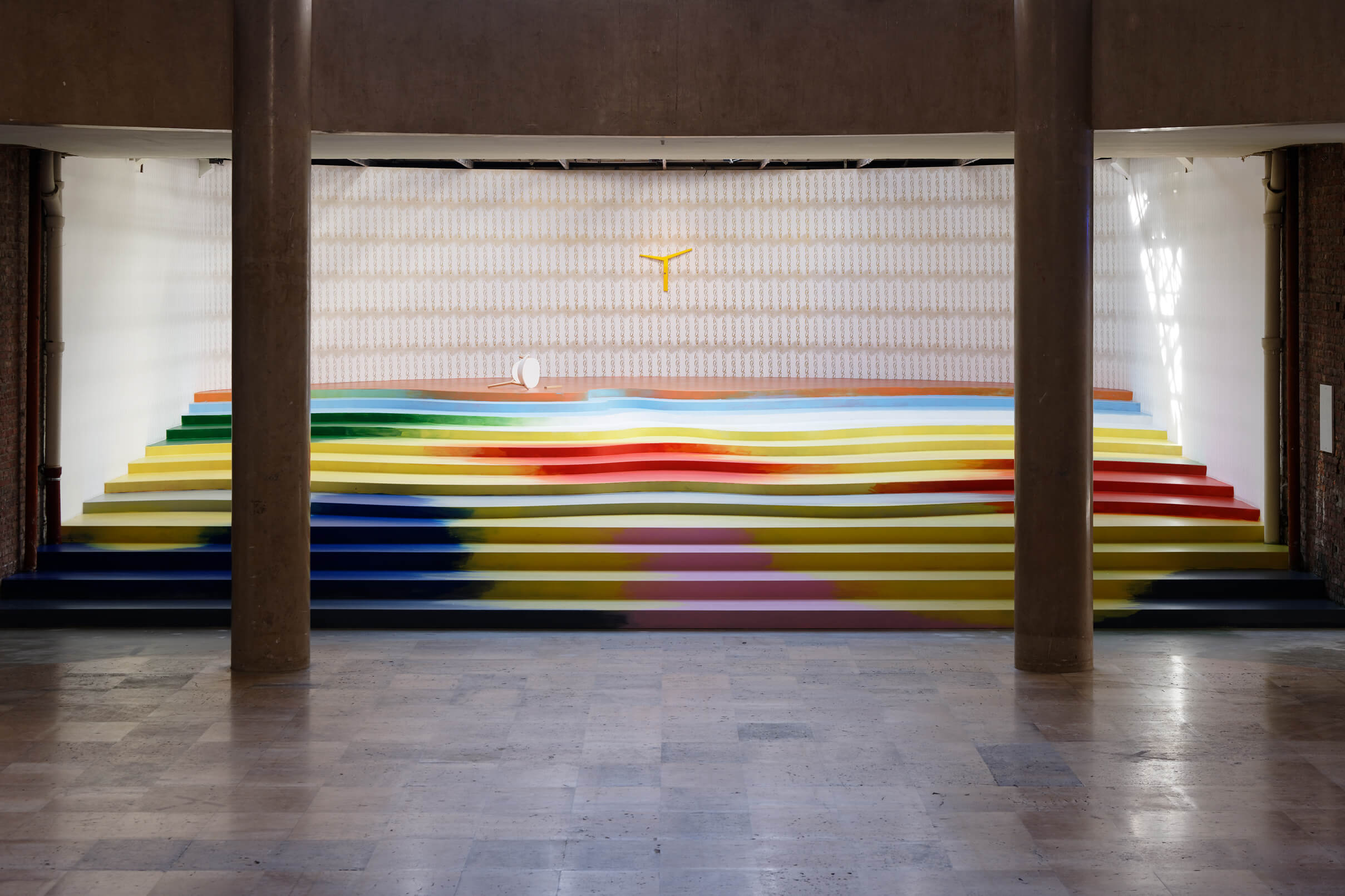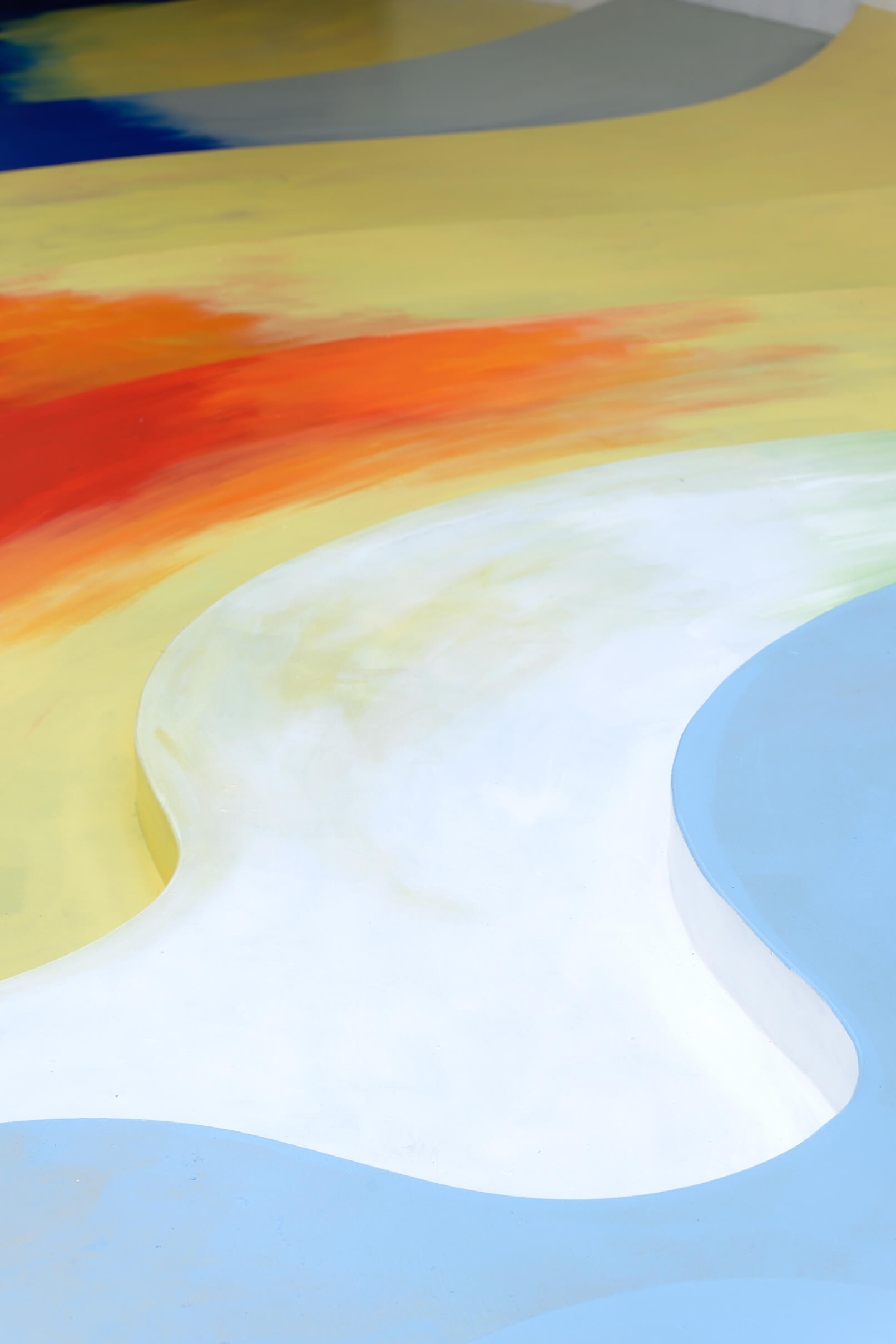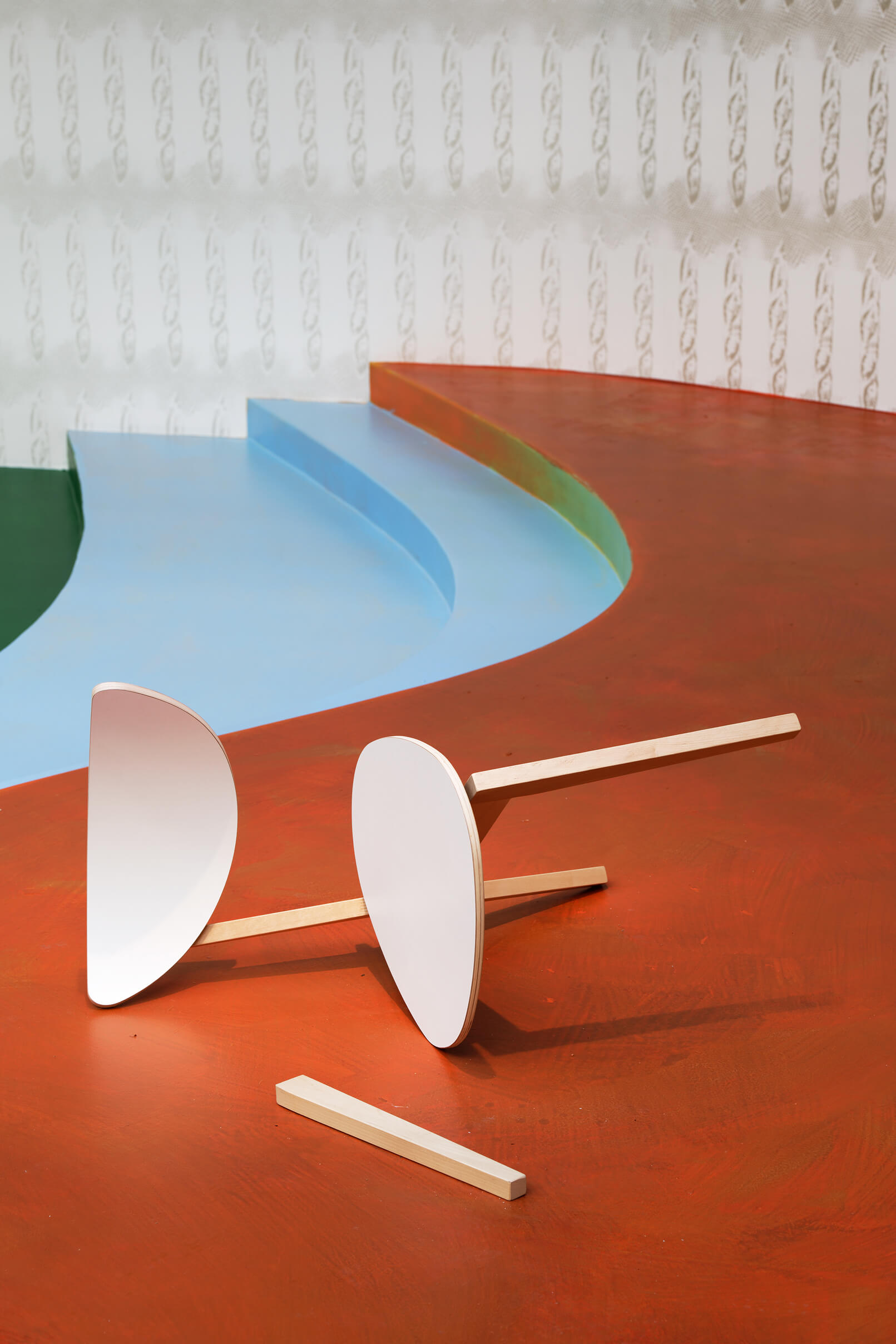SEARCH THE ENTIRE SITE

View of the exhibition "More is less" by Franck Scurti © Adagp, Palais de Tokyo, 2019 Photo credit: Aurélien Mole
Franck Scurti
More is LessWith this original project, Franck Scurti is extending his stroll through art history and the signs of daily life. After approaching the social and economic crisis in a series of sculptures alluding to Van Gogh’s The Potato Eaters (2018), creating a remake with scraps from Edvard Munch’s famous Scream (Le Cri, 2011), the artist is here going back over Paul Gauguin’s Yellow Christ. The interest that Franck Scurti has for such figures is that, in their time, they set out to replace the cold positivism of impressionism by a new humanism. This is a transition that the artist finds to be salutary and active in the current world.
The environment he has produced for the Païpe, conceived as a picture in three dimensions which the visitors are asked to walk around, is organised around a chair leg, rotated through 90°, with a Christ-like look. On the floor, his dismembered corpse produces a shock wave that reverberates across the entire space. The curved rear wall will be totally covered by a silk-printed pattern produced from a bag of baguettes found by the artist. This highly connotated pattern – a multiplication of bread – will then fade out progressively until its almost compete disappearance.
“More is Less will bear no judgements on the loss of a religious meaning, dominated by a consumption culture, the multiplication of breads until they disappear into a technical reproduction will suggest rather economic models built up on mass consumption leading inevitably to a collective impoverishment.”
While Gauguin’s Yellow Christ was inspired in 1889 by a simple-looking 18th-century polychrome wooden sculpture in the nave of a small chapel in Trémalo (near Pont-Aven), Franck Scurti’s works are the fruition of studio work. They are created from found materials and forms, or valueless items, carefully redefined, by each time working out the rationale behind their appearances.
Though quite different, it can be noticed that the same ambiguities govern both pieces. An ambiguity between the real and imaginary worlds, between a universal symbol and the signs of daily life, and between emblems that can be regional (the “Bretons” for Gauguin) or else national (bread).




